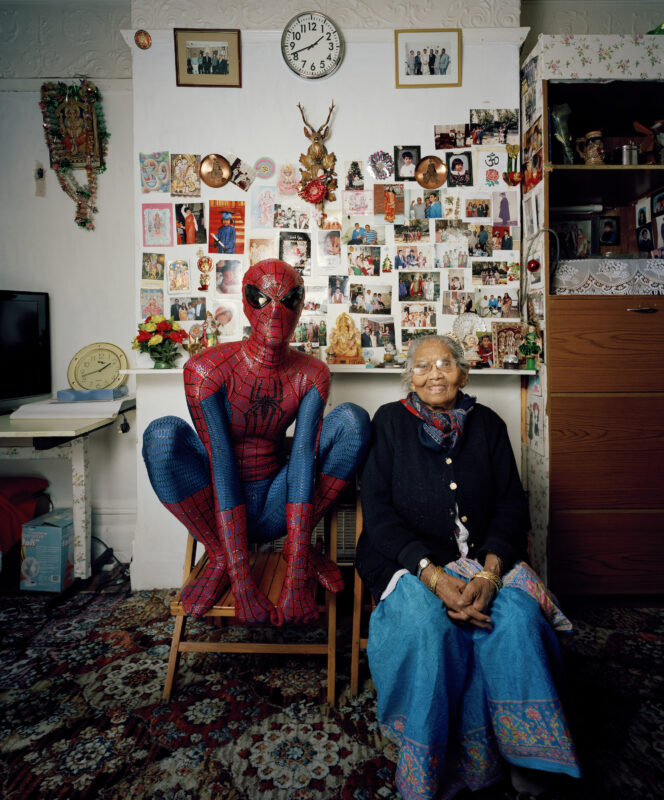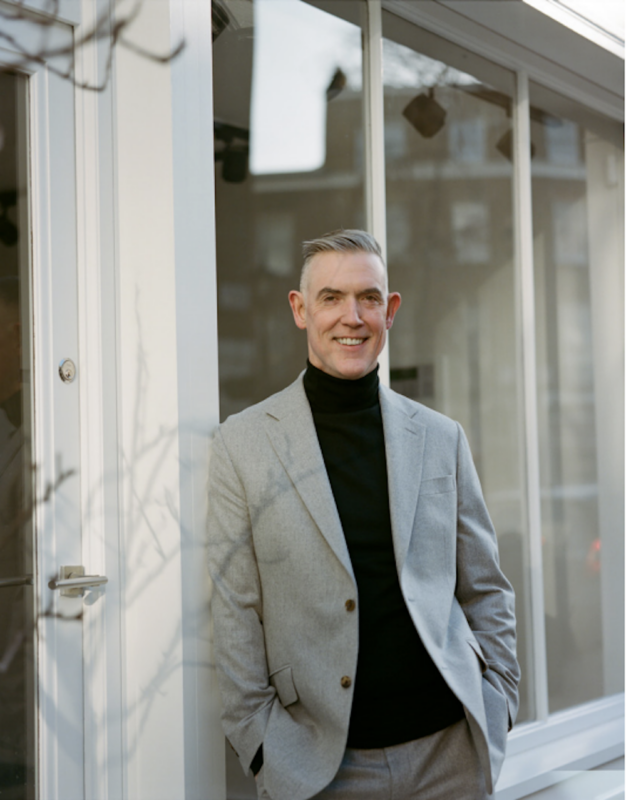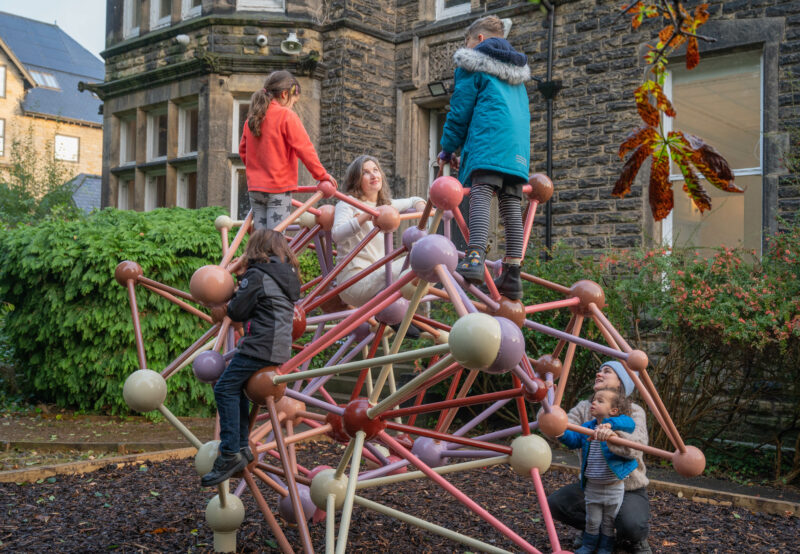
A series of major new commissions by international artists will be presented this summer by Artangel on Orford Ness – a windswept strip of land stretching several miles along the Suffolk coast owned by the National Trust and known locally as the ‘island of secrets’.
Accessible only by boat, Orford Ness’s environment shifts from mud flats, salt marshes and brackish lagoons, to shingle ridges that are home to a unique ecosystem of flora and fauna and an eroding coastline. An assortment of abandoned structures punctuate the desolate landscape, apparitions from the time when Orford Ness was used by the British military during both World Wars as a test site for radio, radar and ballistics systems, and for the UK’s atomic weapons research programme during the Cold War.
Presented in partnership with the National Trust, Afterness will open on 1st July 2021 to the public with new works by poet Ilya Kaminsky, artists Alice Channer, Emma McNally and Tatiana Trouvé and an installation featuring sound recordings made on Orford Ness over many years by Iain Chambers and Chris Watson. Beacon.black, a new 24-hour radio station conceived by DJ and producer Brian d’Souza, mixing sounds from Orford Ness’s nature and culture also launches as the first in a series of commissions performed, filmed and recorded on-site and shared online including new works by London-based artists Paul Maheke and Rachel Pimm and Atlanta-based musician and artist Lonnie Holley.
Walking across the landscape, visitors will hear I See a Silence, a suite of poems by Ukrainian-American writer Ilya Kaminsky inspired by the singular ecology and unsettling history of Orford Ness, with sound design by Axel Kacoutié. Black Beacon, a wooden structure built in the 1920s for early radio experiments will house recordings by Iain Chambers and Chris Watson in a ‘library of sounds’, and a new sculpture by Alice Channer will take over a deserted shelter nearby. The derelict interior of Lab 1, a structure built in the 1950s for the Atomic Weapons Research Establishment’s testing programme will be transformed by a new installation by French-Italian artist Tatiana Trouvé. A large-scale graphite drawing by British artist Emma McNally inspired by the entangled systems and histories of Orford Ness will be housed inside The Armoury.
A series of digital projects will extend and re-imagine the site of Orford Ness online. Paul Maheke will make a new film rooted in the rich history of myths and UFO sightings on Orford Ness, a new project by Rachel Pimm will focus on the geology of the shingle landscape and its imagined legacies of contamination, and Brian d’Souza’s beacon.black will house two distinct radio streams, one examining the audio landscape of Orford Ness itself – bird song, wind, and waves – and the other exploring its history of surveillance and broadcast in a website designed by Ollie Olanipekun, founder of creative studio Futurimpose and also Flock Together, a birdwatching collective for people of colour.
AFTERNESS Opening 1st July 2021 Orford Ness, Quay Street Woodbridge, Suffolk IP12 2NU nationaltrust.org.uk/orfordness
OPENING DAYS
July – August 2021: Thursday, Saturday – Sunday
September 2021: Saturday – Sunday
October 2021: Saturday
TICKETS: artangel.org.uk/project/afterness/
About the Artists
Iain Chambers is a London-based composer, producer and sound artist, whose work explores specific locations and their changing sounds across time, as in Concrete Paris (2021); The Secrets of Orford Ness (2020), The House of Sound (2017), and City of Women (2018). In 2019 Iain launched the independent record label Persistence of Sound, creating a new space for musique concrète, field recordings, and the uncategorizable sounds in between. In 2015 Iain staged the first ever concerts in Tower Bridge’s Bascule Chambers, transforming the structure into a huge resonant chamber. In 2003 Iain co-founded Langham Research Centre, an electronic music ensemble using Cold War era technology to compose new music. The group also create new realisations of work by composers including John Cage, Alvin Lucier and Christian Wolff, using unusual analogue instrumentation.
Alice Channer lives and works on the edges of London. Channer’s forms and materials are found in the social and sensual worlds of industrial and organic processes. Over long periods of time, she immerses herself in industrial and natural materials and production processes to find forms within them that can be shown as sculpture. For her new project for Orford Ness, Channer has found inspiration in its resilient vegetation and in vestiges of its former military life. Channer has exhibited widely over the last 15 years, and is currently represented by Konrad Fischer Galerie, Berlin and Düsseldorf, and Large Glass, London.
Brian d’Souza aka Auntie Flo is an award-winning DJ, producer and live performer. Since bursting onto the music scene in 2010, he has cemented his position as a central figure in the new strand of club music fusing electronic and world influences. Through his revered Highlife party and label he continues to “take World Music into the future” (the Guardian). As a DJ, Auntie Flo has toured extensively around the globe, performing in Asia, Australia/New Zealand, US/Canada, Africa, Latin America and frequently in Europe and the UK, from major festivals like Glastonbury to live sessions online like Boileroom. Auntie Flo hosts the monthly radio show ‘Radio Highlife’ on Worldwide FM.
Lonnie Holley is an artist, musician, filmmaker and educator. Born in 1950 as the seventh of twenty-seven children he grew up in Birmingham, Alabama, and is now based in Atlanta.
In 1979, Holley made his first sandstone carvings to mark the graves of family members killed in a house fire. He continued making sculptural forms from the same material as well as assemblages of found objects including umbrellas, wire, pipe, old cameras, crosses, driftwood and animal skulls. The sculptures numbered in the hundreds, spreading over the hill where Holley lived, next to Birmingham airport and into the woods, taking over neighbouring gardens and abandoned lots, which he later titled ‘the environment’. Holley’s life and work is an improvisational practice manifested through drawing, painting, filmmaking, photography, performance and sound. His sculptures combine found materials with narratives that commemorate people, places and events and are displayed in museums across the US white his music is similarly born out of the sculptural layering of sound and language improvised and shaped in real time. Holley never performs the same song twice.
Axel Kacoutié is a multi-award-winning audio artist, working with sound, music and words to challenge the familiar and revive the magic in the mundane. His work has featured on the BBC, Channel 4, NOWNESS and the Barbican. He is also the Sound Designer and theme composer for the Guardian’s daily news podcast, Today in Focus.
Ilya Kaminsky was born in Odessa, former Soviet Union in 1977, and arrived to the United States in 1993, when his family was granted asylum by the American government. He is the author of Deaf Republic (Graywolf Press) and Dancing In Odessa (Tupelo Press) and co- editor and co-translated many other books, including Ecco Anthology of International Poetry (Harper Collins) and Dark Elderberry Branch: Poems of Marina Tsvetaeva (Alice James Books). Deaf Republic was The New York Times’ Notable Book for 2019, and was also named Best Book of 2019 by Washington Post, Times Literary Supplement, the Guardian and New Statesman. Kaminsky’s poems have been translated into over twenty languages, and his books are published in many countries. In 2019, he was selected by BBC as “one of the 12 artists that changed the world.” He currently holds the Bourne Chair in Poetry at Georgia Institute of Technology and lives in Atlanta
Paul Maheke was born in Brive-la-Gaillarde, France and lives and works in London, UK. Since studying at ENSA Paris-Cergy, Paris and Open School East, London, Maheke’s works and performances have been shown at Tate Modern, London (2017), the 57th Venice Biennale (Diaspora Pavilion, 2017), Centre Pompidou, Paris (2018), Lafayette Anticipations, Paris (2018), Baltic Triennial, Tallinn (2018), Manifesta, Palermo (2018). In 2018 the Chisenhale Gallery in London hosted a solo exhibition of his work, which later travelled to Vleeshal CCA, Middelburg in January 2019. In 2019 his performances were shown at the 58th Venice Biennale and at ICA Miami in addition to a solo exhibition at Triangle France, Marseille. Through primarily dance and a collaborative practice comprising performance, installation, sound and video, Maheke considers the potential of the body as an archive in order to examine how memory and identity are formed and constituted.
Emma McNally lives and works in London. Her graphite drawings are a rhythmic exploration of entanglement and turbulence across scales, times and spaces. Multitudes of different marks conjure up dynamic weather systems and matter moving through different states: cycles of water, particles of carbon, radioactive fallout. They suggest an attempt to chart shifting systems of immense complexity, drawing on soundings, data visualisations, electronic microscopes, particle collision chambers and satellite imaging.
McNally has worked for many years in studios by the River Thames – her drawing echoing the pulsing activity of the city and reflecting the river’s ebb and flow. The first six of an ongoing series of large-scale drawings, Choral Fields, were shown in Mirrorcity at the Hayward Gallery in 2016 and another large group on Cockatoo island in the Sydney Biennale in 2018.
Ollie Olanipekun – Founder and Creative Director for over 10 years in the creative industries, Ollie grew tired of watering down his vision and established Superimpose – now Futurimpose – in 2014. Culturally rooted, he pushes for projects that put people first, that disrupt the status quo and cut through white noise. Representation and building community are not buzzwords, but practices Ollie has undertaken throughout his career. In 2020, Ollie saw a need to create a safe space for his community and combined this with his love of nature, establishing Flock Together: a support group that tackles the underrepresentation of people of colour in the outdoors industries and organisations. Since its inception, Flock Together has become a cultural movement, with chapters in seven cities around the world, numerous brand partnerships, and extensive press, and it has been featured on BBC One’s ‘The One Show’ and Vice news.
Rachel Pimm was born in Harare, 1984 and lives Northamptonshire, UK. They work across sculpture, text, photography, video and performance to explore environments and their materialities, biochemistries, histories and politics, with an interest in queer, feminist and post-colonial materialisms, natural histories and resource extraction, in addition to the potential of surfaces and matter to transform. Pimm’s work has been featured in programmes at the Serpentine Gallery, Whitechapel Gallery, Jerwood Space, Chisenhale Gallery and The Royal Academy – all in London between 2014-20 – as well as internationally across Europe and the USA. Residencies include Loughborough University Chemical Engineering, Gurdon institute of Genetics at Cambridge University, Rabbit Island, Michigan, USA and was Whitechapel Gallery Writer in Residence 2019/20. They are currently lecturing at UAL and have a forthcoming commission with Arts Catalyst in 2021/22.
Tatiana Trouvé was born in Calabria, Italy and grew up in Dakar, Senegal. Following her artistic studies at the Villa Arson in Nice and in the Netherlands, she moved to Paris in 1995 where she continues to live and work. Her aims are to create a place where the coordinates of space and time, the arrangement of the material, the physical and the psychic, organize convergences between the real, the imaginary and the phantasmic.
Known for her “Bureau d’Activités Implicites” (Bureau of Implicit Activities) and for several site-specific projects in Europe and the US, Trouvé’s sculptures and installations blur the boundaries between the domestic and the natural, the mineral and the living, the two dimensions of drawing and the three dimensions of volume. The rules and laws that determine our reality are recomposed in worlds where new coexistences are formulated. Trouvé was awarded the Marcel Duchamp Prize in France in 2007, followed by a solo presentation at the centre Georges Pompidou, and has exhibited her work in numerous museums around the world over the past two decades.
Chris Watson was a founding member of the Sheffield based experimental music group Cabaret Voltaire during the late 1970’s and early 1980’s. Since then he has developed a particular and passionate interest in recording the wildlife sounds of animals and habitats around the world. As a composer and sound recordist Watson specialises in creating spatial sound installations which feature a strong sense and spirit of place. His television work includes many programmes in the David Attenborough ‘Life’ series including ‘The Life of Birds’ which won a BAFTA Award for ‘Best Factual Sound’ in 1996, and as the location sound recordist for the BBC series ‘Frozen Planet’ which also won a BAFTA Award for ‘Best Factual Sound’ (2012).









